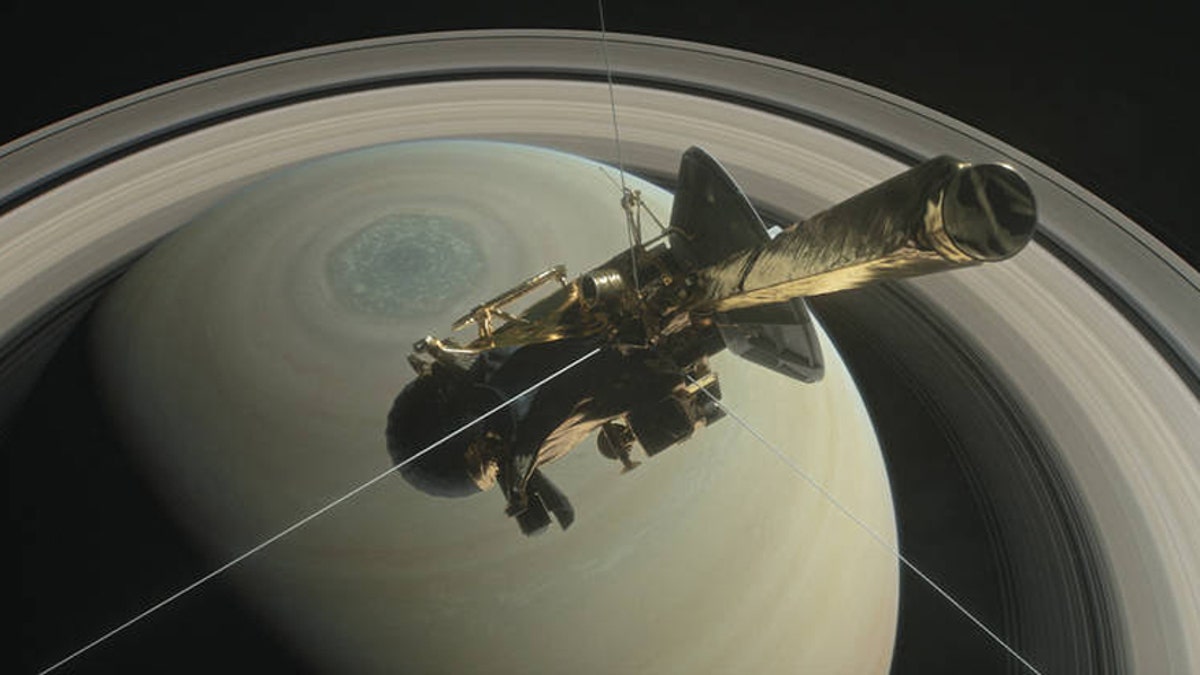
Artist's rendering of NASA's Cassini spacecraft (Credit: NASA/JPL-Caltech).
NASA’s Cassini spacecraft will make its historic dive between Saturn and its famous rings Wednesday.
No spacecraft has ever explored the 1,500-mile gap between Saturn and its rings, so Cassini will use its dish-shaped high-gain antenna, which measures 13 feet across, as a protective shield.
“No particles larger than smoke particles are expected, but the precautionary measure is being taken on the first dive,” explained NASA, in a statement. “The Cassini team will use data collected by one of the spacecraft’s science instruments (the Radio and Plasma Wave Subsystem, or RPWS) to ascertain the size and density of ring particles in the gap in advance of future dives,” it added.
The spacecraft is expected to cross the ring plane at 5 a.m. EDT Wednesday in the first of a series of 22 dives. Cassini will be out of contact with Earth during the dives and is not expected to regain contact before 3 a.m. EDT on Thursday April 27.
NASA: SATURN'S MOON, ENCELADUS, COULD SUPPORT LIFE
The first images are expected to be available after 3:30 a.m. EDT on Thursday April 27.
The spacecraft has generated a trove of scientific data on Saturn and its moons during its mission. Earlier this month, for example, NASA announced that Saturn’s moon Enceladus could support life thanks to the discovery of hydrogen.
NASA FINDS HIGHEST PEAK ON SATURN'S LARGEST MOON TITAN
After almost two decades in space, the orbiter’s mission will end on Sept. 15 2017 when Cassini is scheduled to crash into Saturn.
The Cassini mission began on Oct. 15 1997 when the spacecraft launched from Cape Canaveral Air Force Station aboard a Titan IVB/Centaur rocket. Cassini arrived at Saturn in 2004.
NASA is partnering with the European Space Agency (ESA) and the Italian Space Agency on the Cassini-Huygens mission. The Jet Propulsion Laboratory (JPL), a division of Caltech, manages the mission for NASA’s Science Mission Directorate.
Correction: An earlier version of the story said that Cassini would make its dive on Thursday and was not expected to regain contact before Friday. This has been corrected.




















